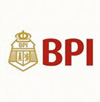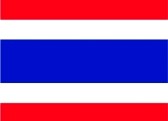All Categories
The Great War Through Keystone Stereographs
Share Tweet
*Price and Stocks may change without prior notice
*Packaging of actual item may differ from photo shown
- Electrical items MAY be 110 volts.
- 7 Day Return Policy
- All products are genuine and original








About The Great War Through Keystone Stereographs
World War I stereoview sets remained popular for many years after the war ended. In the United States, the most commonly encountered World War I stereographs were produced by four companies: Keystone View Company, Underwood & Underwood, and W.E. Troutman of this country, and Realistic Travels of England. Of those four, Keystone was the largest and in business the longest time. It produced over 800 war stereographs, most a part of one or more of the seven principle war sets. The Great War Through Keystone Stereographs describes these sets from the first one in 1915 to the last one in 1932. It includes photos of over 120 stereoviews and complete title lists for each set. While Keystone stereoviews are the most common in this country, not all Keystone cards are common. . The Great War Through Keystone Stereographs provides for the first time a sound basis for estimating their market value. Anyone who looks at Keystone war stereographs card on eBay will find that dealers and collectors alike betray considerable ignorance of their scarcity, with common cards being offered (and purchased) at $25.00 and rare cards and sets going for a song. As we approach the centennial of the Great War, stereocards about it are likely to become increasingly popular. The collector who owns this book will avoid overpaying and will be able to find bargains. . The Great War Through Keystone Stereographs is far more than a catalog. The chapters on each set offer serious students of the war and photography insight into Keystone's editorial decisions as they continually tried to improve the quality of their coverage of the Great War. It also establishes previous unknown links among producers of stereographs of the period and makes sense of the baffling number patterns apparent in any group of cards. It is an indispensable a reference to historians and dealers.

















